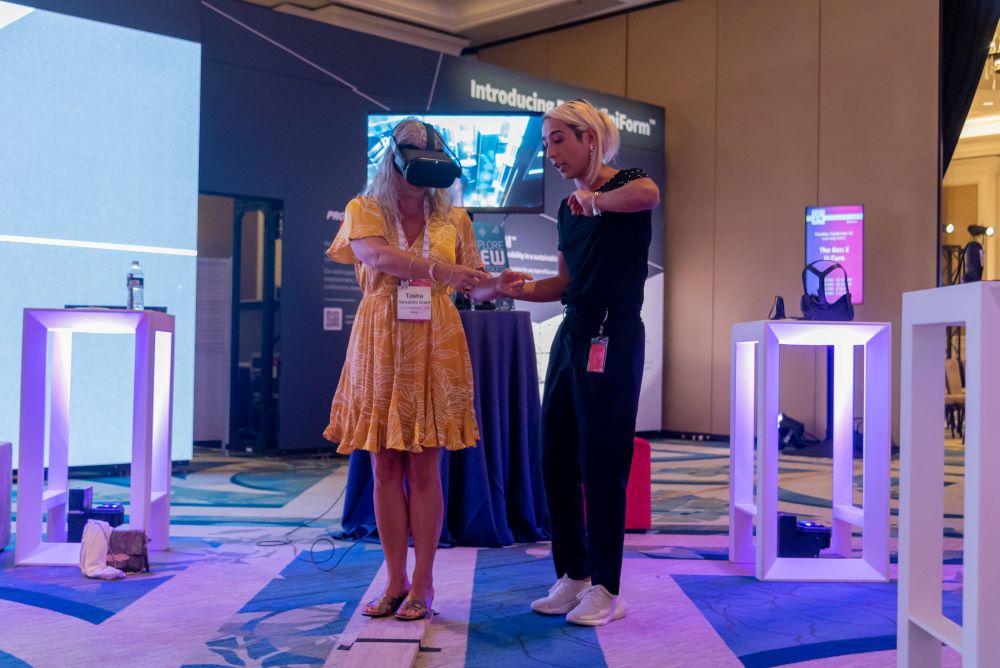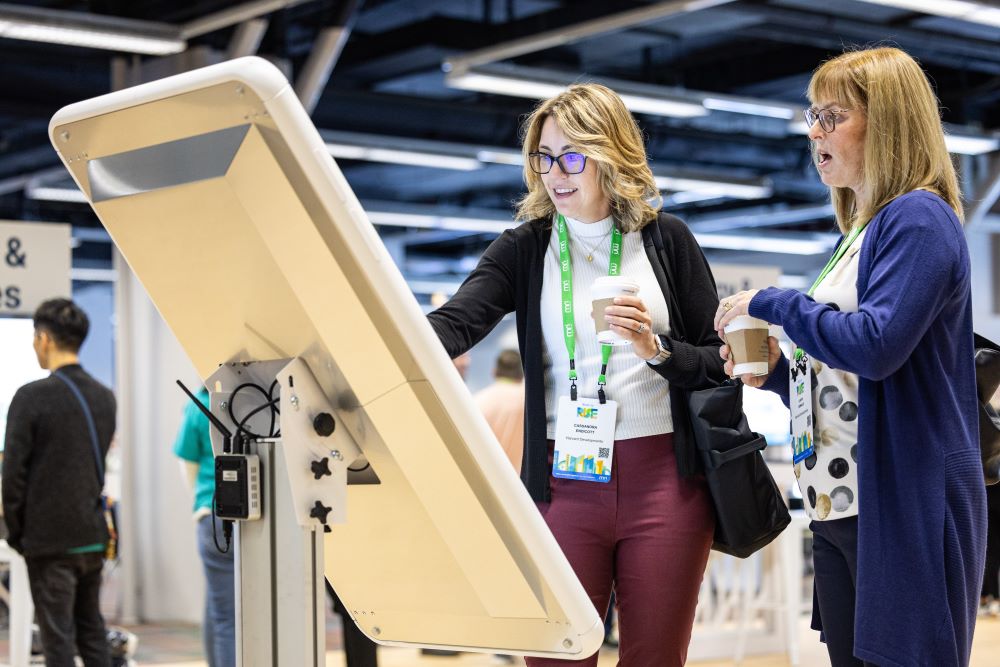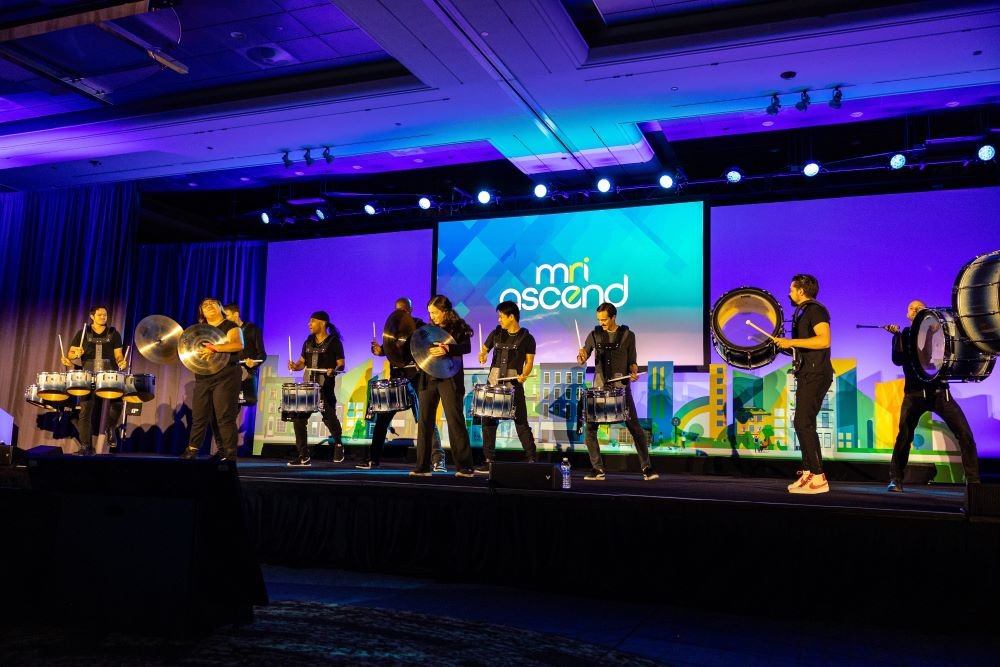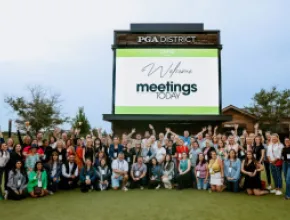The foundation of how we work was rocked by the pandemic, with many working at home either all or part of the time. This still-unfolding revolution has resulted in the commercial districts of many large cities teetering in their relevancy and those who used to fill those towering buildings readjusting their lives in the post-pandemic business landscape.
With younger generations solidifying their position in the workplace—the youngest of which were radically impacted by the pandemic as they entered their final years of college—the shift is even more dramatic.
[Related: How to Smash the Hierarchy in Corporate Meetings]
As with most major changes in our work lives, this transformation inevitably weaves its way into the way we convene.
Following are the perspectives of three meetings and events industry veterans who have their fingers on the pulse of corporate meetings and how they’ve perhaps changed forever since the big realignment, and also how the biggest generational mix ever in the workplace is impacting the way we work and how we meet.
Amy Kramer and Olivia Louderman, Maritz

Meetings and events giant Maritz is a logical first place to start when sussing out corporate meeting trends. Martiz’s Amy Kramer, market and product innovation leader, and Olivia Louderman, technology project manager, are on the front lines of the changes in the segment.
According to Maritz, a major factor in the evolving corporate meetings environment is the preferences and expectations of younger generations entering the workforce and rising up organizational charts. Addressing these specifics, but more importantly finding commonalities amongst the generations, are key in the short term.
“Expectations and behaviors are very different than they were 20 years ago, and the pandemic was a start for that,” Kramer said. “But it also now becomes the expectation for a lot of generations coming into the workforce. They want flexibility. They want to work wherever they want to work and when they want to work, and there are different perspectives across the generations on how we manage this type of difference. What we’re seeing is a lot of people are embracing that giving of flexibility and then really using the workplace to be a place of connection and a place of meetings and a place of collaboration versus it being everybody in the office five days a week from nine-to-five.
[Related: Maritz Global Events' Amy Kramer on Disruptive New Meetings Tech]
“The other place we’re seeing it is in the traditional settings of how we plan events,” Kramer continued. “Events in the past used to have a very similar format: It’s a seven-to-seven day and then you go out to a big event for dinner, and there’s no personal time for people to experience different parts of an event. Now, we’re seeing a much more flexible approach and more time for networking and more choice in the different things that you do. What they want is to create a better connection, and once you have that understanding and can apply it to what people need, you’re going to foster better connection and better communication within and across generations.”
Bridging the Generation Gap
While everyone tends to focus on the differences between generations—with the very idea of “generation” being more of a flexible social construct than a firm set of qualities and preferences—bridging the gap and focusing on similarities is the key to appealing to all attendees.
“There’s a lot of talk, especially now around all the shifts that have happened, of not so much focusing on the differences of generations, but how can we leverage the similarities of generations to really enhance experience,” Kramer said, adding that changes in the work environment brought on by the pandemic resulted in Maritz creating a 10-member team developing initiatives focusing on innovation in this area. “Whether you’re working together in the workplace, attending an event, attending a celebration or an incentive experience, we know that we need to appeal to and connect people.
“So, our work in this space isn’t necessarily new, but it’s becoming more focused around how do we bridge the gap? How do we uncover ways to connect people and ultimately create strategies and approaches that make it easier for people to build these connections?” Kramer asked.

According to Louderman, a key word that defines the effort is “values.”
“We’re finding similarities among the generations and commonalities, specifically around values,” Louderman said. “What are the values that each generation brings to the table and how can we tap into each value, find similarities and then harvest those values and see them in real time at events? We are putting in the time to find similarities and make events more inclusive.”
Continuing on the values theme, giving back during an event via CSR programs is a desirable activity for all generations, but the way these programs take shape appeals differently to different generations, in a general sense.
“With Gen Z coming in, we’ve seen this huge drive toward CSR activities on events, and what we’ve noticed across the board is that each generation does want to give back in some way to their community, it just looks different,” Louderman said. “Gen Z is open to this idea of gathering and doing a giveback activity, whereas previous generations—maybe your Baby Boomers or your Millennials, or even your Gen Xers—are okay with going to a gala function and donating dollars.”
[Related: The Top Tech Minds of Maritz on How AI Will Transform the Meetings Industry]
Another interesting aspect is the notion of “freedom,” and how that concept is important, yet different, between the generations.
“Baby Boomers are so tied to the tradition of the workplace in their nine-to-five lives. They don’t see that as a place to portray who they really are,” Louderman said. “It’s just recently there’s been a whole movement of bringing your whole self to work. So, part of the challenge here, and part of our goal, is to figure out how we can allow attendees to express those values in different ways.”

The Sporting Life
Sporting events are one unifying experience that brings together all generations.
“When you think about showing up to a baseball game or a hockey game, it doesn’t matter if you are 90 or if you are 3. You’re wearing the jerseys, you’re cheering it on—everybody is equal because of that experience and celebration,” Kramer said. “It’s the same thing with playing a board game. It doesn’t matter how old you are, how young you are, if you sit down to play a game of cards or a game of Monopoly, it’s the same—everybody just engages in that experience, the rules are all the same.
“What we started to look at is how we can identify and adopt these same types of experiences and traditions and emotions and infuse those into an event experience,” Kramer added, “and really take those principles to create those opportunities and really bridge that gap for these different types of individuals.”
Maritz uses the term “grounding events” to describe these types of bonding experiences. Other examples include concerts or music events and holiday and other celebrations. Food is another natural bonding experience the breaks down generational barriers.
[Related: Live From PCMA CL: Maritz CEO Peckinpaugh Digs Into 2024 Meetings and Events Trends]
Angie Ahrens, Director of Global Events, MRI Software

Being in charge of real estate industry technology company MRI Software’s global events strategy, which includes sales kickoffs and users conferences in Sydney, Australia; South Africa; London; and a flagship event in the U.S., Angie Ahrens has a keen perspective on the current state of corporate meetings.
Adding to this is the knowledge she gleans from being on the MPI Foundation Global Board of Trustees.
Ahrens sees attendees being more selective in how they decide to dedicate their time to in-person business events, and the organizations that sponsor them are being craftier in minimizing spend and increasing efficiencies.
“We went back to the initial idea of why we do our meetings—what is our intention? When we look at our events, we think what the main message is we want to give our clients,” she said. “We went more regionalized, so we’re closer to their area. We also got very intentional with our education and based it on survey results and what their needs are—what would get them out of the house. We continue to drive home the theme of being more empathetic of our people when we’re asking them to be out of the office.”
Session Times Being Reduced
The days of long education sessions, it seems, are also on the wane.
“We are shortening our content,” Ahrens said. “That was a big thing we saw out of the pandemic—shorter attention span. The younger generation wants condensed content, so we have more panels and deep dives for more-seasoned people.
“We cut down most sessions to 45 minutes when possible” she added. “Shorter sessions allow them to take calls with family or do business at break times. We’re trying to give them more white space so they enjoy their experience and craft their own experience while we weave this content around it.”

Networking Is King
Networking is the key driver for Ahrens’ in-person events, with that intentionality even being carried over into guiding conversations during lunch by placing questions on the tables.
“Networking can be hard for people—not everyone loves being thrown in a room and being forced to talk to people,” Ahrens said. “They say they want it, but they need the encouragement as well. I think intention is the biggest thing that has changed,” Ahrens maintains. “People’s priorities have changed and we’re seeing it with the hours they’ll give. From a two-day to a one-day program or from a three-day to a two-day program. They may not be there the whole time, but we want them totally engaged when they are there.”
Ahrens said that this emphasis on networking even carries over to the design of name badges.
“We have more branding on our name badges so they can quickly see who they want to network with and find who they’re looking for,” she said.
GBTA's Corporate Meeting Trends
The CWT GBTA (Global Business Travel Association) Travel Price Forecast 2024 last August revealed that demand from groups has rebounded sharply post-pandemic, leading to increased pricing that has also been pushed upward due to the inflationary economic environment. Compression has also reduced availability, contributing to higher prices and less lead time.
Other key trends, and projections for 2024, include the following:
- Average cost per attendee, per day, rose from $160 in 2022 to $169 in 2023 and $174 in 2024.
- Average cost for F&B per attendee rose from $174 in 2022 to $186 in 2023 and $190 in 2024.
- Average ADR for group bookings rose from $297 in 2022 to $310 in 2023 and $321 in 2024.
- The entire travel supply chain has raised prices significantly, resulting in buyers having no preconceived ideas about how far their budget will go, making a centralized strategy the most effective way to plan and manage meetings.
- Corporations are willing to absorb costs in order to be inclusive with F&B, such as offering a wide diversity of choice for vegetarians, vegans, dairy-free, pescatarians and others.
- Sustainability concerns are leading many organizations to scale back on buffets to opt for fresh food stations in order to reduce food waste and save money.
- Events focusing on experiences are becoming increasingly important, such as getting creative to balance authenticity, costs and Environmental, Social and Government (ESG) factors, such as using local chefs and encouraging the reduction of food waste.
- The work-from-home era has resulted in reduced demand for internal travel to opt for video conferencing, but onboarding and recruitment still value in-person experiences.
- 90% of the businesses in the survey said they strongly agree that in-person meetings build bonds with stakeholders and clients, but these events should be energizing affairs.
- Incentive travel has grown in popularity as a way to motivate employees, with programs becoming longer, more frequent and having more participants.







